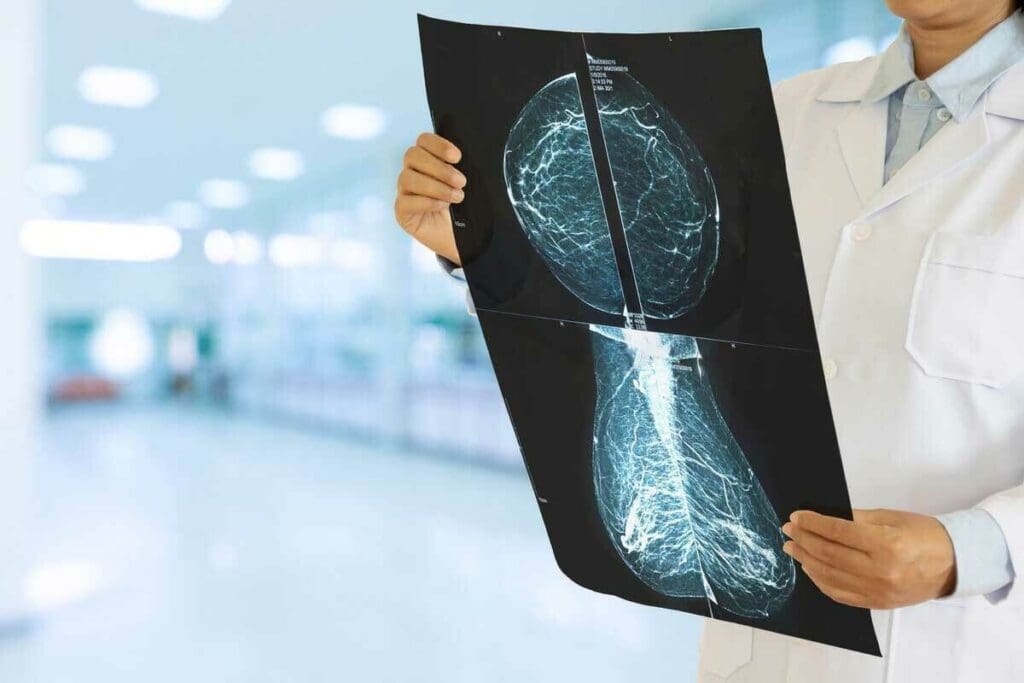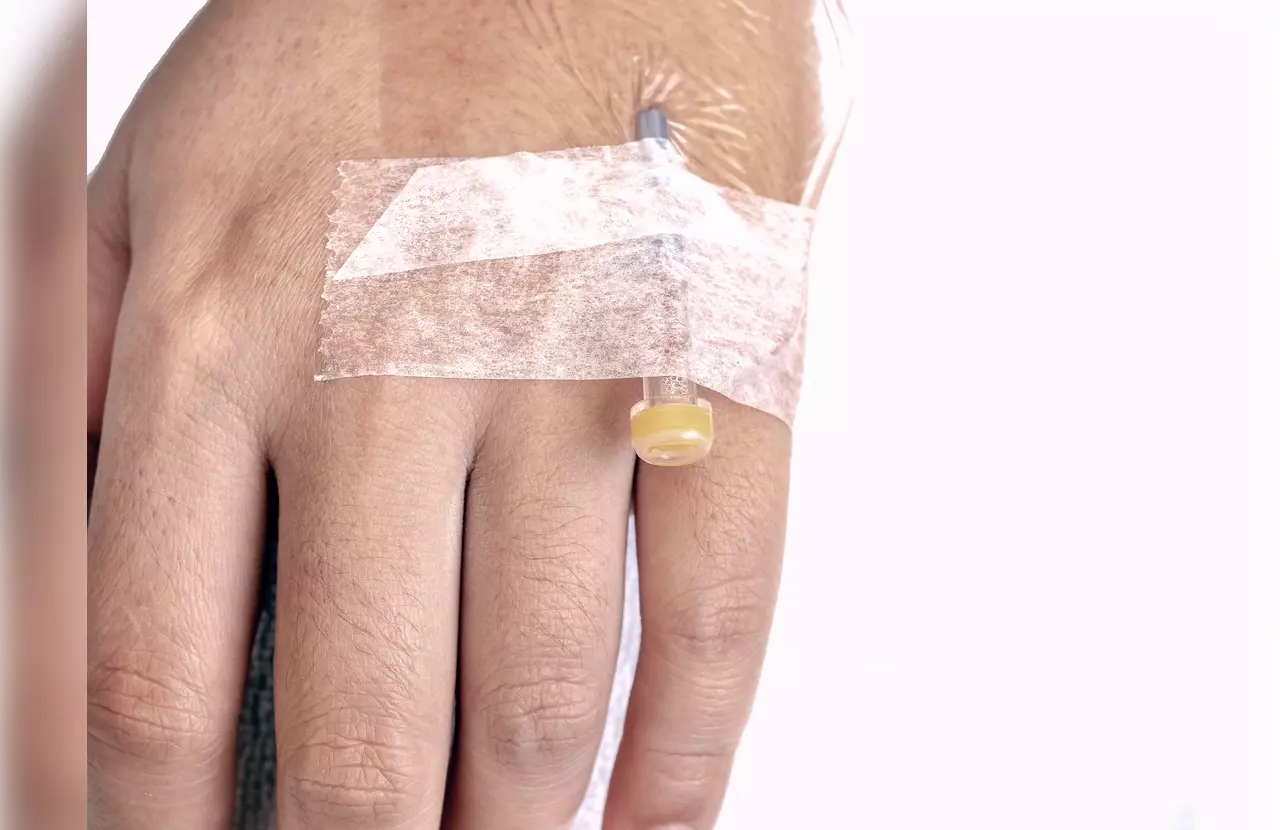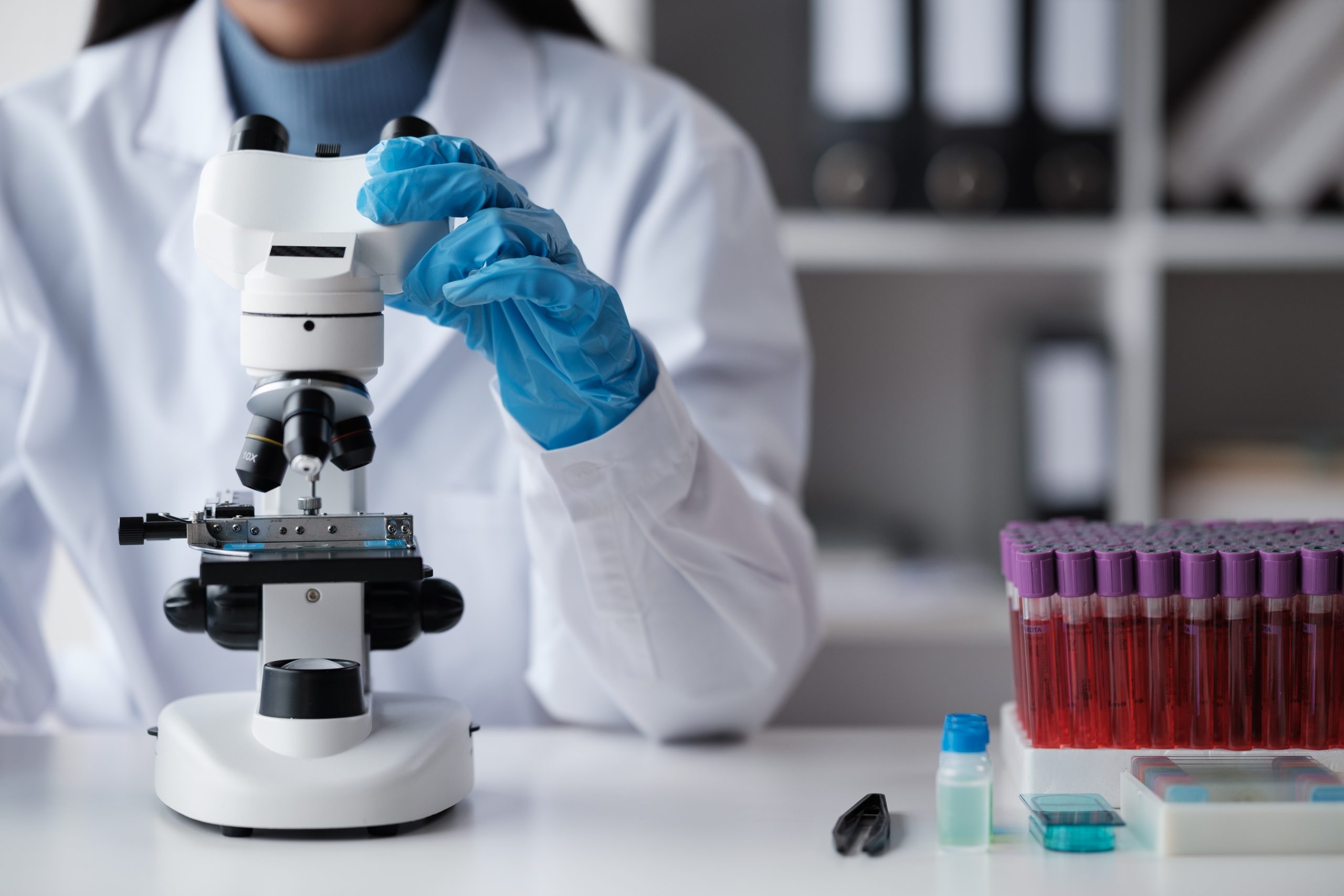Last Updated on November 27, 2025 by Bilal Hasdemir

Understanding PET Scan Accuracy in Cancer Diagnosis
At Liv Hospital, we know how scary a cancer diagnosis can be. That’s why the accuracy of diagnostic tests is so important. Positron Emission Tomography (PET) scans are known for their high accuracy in detecting, staging, and monitoring cancer.
A PET scan is an imaging test that shows how the body’s tissues and organs work. It uses a special camera to create detailed pictures of the body’s activity.
Cancer cells take in more sugar, which shows up on the scan. This makes them easy to spot. Even though PET scans are very good, their accuracy can change based on the cancer type. Understanding pet scan accuracy helps patients and doctors make more informed decisions about diagnosis and treatment.
Key Takeaways
- PET scans use a radioactive drug to show metabolic activity in the body.
- Cancer cells absorb more sugar, making them visible during the scan.
- The accuracy of PET scans can vary with the type of cancer.
- PET scans are often combined with other tests to improve diagnostic accuracy.
- Conditions like infections and diabetes can affect PET scan results.
Understanding PET Scans in Cancer Detection

It’s key to know how PET scans work for those facing cancer. These scans are a big help in finding and treating tumors. They show how active tumors are, guiding doctors in treatment choices.
What Is a PET Scan and How Does It Work?
A PET scan uses a special drug to see how active body parts are. This drug, FDG (fluorodeoxyglucose), goes to areas that are very active, like tumors. This helps doctors spot tumors and see if they’ve spread.
The drug is injected into the blood. Then, the PET scanner picks up the signals it sends out. This creates detailed pictures of what’s happening inside the body.
The Role of PET Scans in Cancer Diagnosis and Staging
PET scans are very useful in fighting cancer. They help find cancer, see if it’s spread, check if treatments are working, and spot when cancer comes back. They show how active tumors are, helping doctors understand the cancer’s type and how aggressive it is.
| Application | Description |
| Cancer Detection | Identifying cancerous tissues based on metabolic activity |
| Cancer Staging | Assessing the spread of cancer to lymph nodes or distant organs |
| Treatment Monitoring | Evaluating the effectiveness of ongoing cancer treatment |
| Recurrence Detection | Identifying cancer recurrence after treatment |
With PET scans, doctors can make better choices for patients. They can create treatment plans that really fit each person’s needs.
PET Scan Accuracy: Statistical Overview

PET scans are key in cancer diagnosis. They show how active tumors are. This helps doctors find and manage cancer better.
Sensitivity and Specificity Rates Explained
Sensitivity means a PET scan can spot cancer correctly. Specificity means it can also spot when there’s no cancer. PET scans are very good at this, with sensitivity at 85-95 percent and specificity at 80-98 percent.
This shows PET scans are very good at finding cancer. But how well they work can change. This depends on the cancer type and the PET scan technology used.
Accuracy Variations Across Different Cancer Types
PET scans work differently for each cancer type. They’re best at finding cancers that use a lot of energy, like lymphoma and lung cancer. But cancers that use less energy might be harder to spot.
- Lymphoma: High detection accuracy due to high metabolic activity.
- Lung Cancer: Effective for detecting and staging due to the tumor’s metabolic characteristics.
- Prostate Cancer: May have varying detection accuracy depending on the cancer’s aggressiveness and metabolic activity.
Factors That Influence Detection Reliability
Many things can affect how well a PET scan works. The size of the tumor, its metabolic activity, and the type of radiotracer used are important. Smaller or less active tumors can be harder to find.
New PET technologies, like combining PET with CT or MRI, help improve accuracy. The radiotracer used, like FDG, also matters a lot for the scan’s results.
Knowing these details helps doctors understand PET scan results better. This helps them make better decisions for their patients.
When PET Scans Are Most Reliable
PET scans have changed how we find cancer, showing where it has spread. They give us detailed information on cancer’s growth and activity.
Detecting Metastatic Cancer is where PET scans shine. Studies show they’re great at spotting metastatic breast cancer. This helps doctors see how far the disease has spread and how well treatments are working.
Excellence in Detecting Metastatic Cancer
PET scans are key for checking how far metastatic breast cancer has spread. They help doctors see how well treatments are working. This info is vital for creating care plans that fit each patient’s needs.
“PET scans can change diagnosis or treatment plans in up to 50 percent of cancer cases,” says a study. This shows how important PET scans are in making treatment choices.
Identifying Active vs. Dormant Tumors
PET scans can tell if tumors are growing or not. This is key to knowing how aggressive cancer is and what treatment to use.
They check how active tumors are by looking at their metabolic activity. This helps doctors plan the best treatment and check how well it’s working.
How PET Results Change Treatment Plans
PET scans often lead to changes in treatment plans. They help doctors see where cancer has spread and how active it is. This info is key for making treatment choices.
Often, PET scan results mean changing treatment plans. This ensures patients get the best care possible. By using PET scan info, doctors can improve patient outcomes and quality of life.
As we keep using PET scans for cancer diagnosis and management, their value is clear. They’re essential for finding cancer spread and tumor activity in the fight against cancer.
Advanced PET Technologies and Enhanced Detection
Advanced PET technologies are changing how we diagnose cancer. These improvements are making diagnoses more accurate and helping patients more.
PET-CT and PET-MRI Hybrid Imaging Benefits
Using PET with CT and MRI has brought big benefits. For example, PET-CT combines PET’s function with CT’s anatomy. This makes diagnoses better. A study on PMC shows this combo helps find cancer better.
PET-CT offers:
- Improved diagnostic accuracy
- Better cancer staging
- Enhanced treatment response assessment
PET-MRI, on the other hand, pairs PET’s function with MRI’s soft-tissue contrast. It’s a powerful tool for finding and understanding cancers, even in hard-to-reach areas.
New Radiotracers Beyond FDG
While FDG is common in PET scans, new tracers are being made. These target specific cancers or metabolic processes. They could help find cancers that FDG can’t.
| Radiotracer | Target | Potential Use |
| FLT (Fluorothymidine) | Cell proliferation | Assessing tumor aggressiveness |
| FAPI (Fibroblast Activation Protein Inhibitor) | Cancer-associated fibroblasts | Detecting various cancers |
Technology Advancements Improving Sensitivity
New PET scanner tech, like better detectors and algorithms, is making scans more sensitive. This lets us spot smaller tumors and understand tumor metabolism better.
Experts say, “Advanced PET technologies will make scans even more accurate, over 90 percent in some cases.” This is key to catching cancer early and planning treatments well.
“The future of cancer diagnosis lies in the continued development and refinement of PET technologies, providing patients more accurate and personalized care.”
We’re heading towards a future where PET scans get even better. Thanks to tech progress and new tracers, cancer diagnosis will keep getting better. This will help patients all over the world.
Limitations: When Can PET Scans Miss Cancer?
PET scans are a powerful tool in cancer detection. But they are not perfect and can miss some tumors. It’s important for healthcare providers and patients to know these limits to make good decisions about diagnosis and treatment.
Small Tumors Below Detection Threshold
PET scans can’t find small tumors. They can only spot tumors bigger than 5-8 mm. Tumors smaller than this might not show up, leading to false-negative results.
For example, small lymph node metastases or tiny primary tumors might not be seen. This shows why using PET scans with other tools like MRI or CT scans is key for a full check-up.
Slow-Growing Cancers with Low Metabolic Activity
PET scans work by looking at how cells use glucose. Tumors that use little glucose, or “cold” tumors, are hard to spot. This is true for slow-growing cancers that don’t use much glucose.
Some cancers, like certain prostate cancers or neuroendocrine tumors, are hard to find because they don’t use much glucose. In these cases, other tests or biopsies might be needed to confirm cancer.
Specific Cancer Types That Challenge PET Detection
Some cancers are harder for PET scans to find because of how they work. For example:
- Cancers that don’t take up much glucose, like some prostate or renal cell carcinomas.
- Tumors in areas with lots of background activity, like the brain.
- Cancers that spread out or grow in a way that makes them hard to see from surrounding tissues.
Knowing these limits is key to understanding PET scan results. It shows the importance of using different tests and clinical checks together. This way, we can get the most accurate diagnosis possible.
Understanding False Positives in PET Imaging
PET scans are great at finding cancer, but they can also show false positives. A false positive means a PET scan says there’s cancer when there isn’t. This can cause a lot of worry, extra tests, and wrong treatments.
Do PET Scan Hot Spots Always Mean Cancer?
Hot spots on PET scans don’t always mean cancer. These spots show where the body is working hard, which can be for many reasons, not just cancer. A doctor said, “A PET scan is useful, but it’s not the final say; it must be seen with the whole picture of the patient.”
“A PET scan is a valuable tool, but it’s not a definitive test on its own; it needs to be interpreted in the context of the patient’s overall clinical picture.”
– Medical Expert
Common Causes of False Positive Results
Many things other than cancer can make PET scans show false positives. These include:
- Infections: Bacterial, viral, or fungal infections can cause inflammation, leading to increased metabolic activity.
- Inflammation: Conditions like arthritis or inflammatory bowel disease can result in hot spots on PET scans.
- Granulomatous diseases: Diseases like sarcoidosis can cause PET scan abnormalities.
- Recent surgery or trauma: Healing tissues can exhibit increased metabolic activity.
Distinguishing Between Cancer and Benign Conditions
To really know if it’s cancer, doctors look at PET scans with other tests and patient information. This way, they can tell if it’s cancer or something else. For example, comparing PET scans with CT or MRI scans gives clearer pictures.
Understanding PET scans is key. Remember, “PET scans are just one piece of the diagnostic puzzle.” By using PET scans with other tools and patient history, doctors can make better choices.
Interpreting Negative PET Scan Results
When a PET scan shows no cancer, people often think they’re cancer-free. But it’s not that simple. A negative PET scan means no high activity spots were found, which is often cancer. Yet, it doesn’t mean there’s no cancer at all.
If a PET Scan Is Negative, Does That Mean No Cancer?
A negative PET scan lowers the chance of cancer, mainly for checking if it’s back or spread. But, it’s not a sure sign of no cancer. Small or slow-growing cancers might not show up on a PET scan. Doctors look at all tests and checks together to understand the situation.
Key Considerations for Negative PET Scan Results:
- The size and metabolic activity of the possible tumor
- The type of cancer being checked for
- Previous test results and treatments
Follow-up Recommendations After Negative Results
After a negative PET scan, we suggest keeping an eye on things and more tests if needed. How often and what kind of tests depend on the person’s risk, health history, and cancer type.
| Follow-up Action | Timeframe | Purpose |
| Clinical Assessment | 3-6 months | Evaluate overall health and watch for symptoms |
| Imaging Tests (e.g., CT, MRI) | 6-12 months | Get detailed pictures of the inside of the body |
| Blood Tests | As recommended | Check tumor markers and overall health |
Can PET Scans Be Wrong? Understanding False Negatives
PET scans are not perfect. They can miss small or slow-growing cancers. It’s key for patients to know a negative PET scan is just one part of the puzzle.
“A negative PET scan does not rule out the presence of cancer, even if the tumor is small or slow-growing.” – Medical Oncologist
Understanding a negative PET scan needs a full grasp of its limits and the bigger picture. We help patients get their diagnosis and what steps to take next.
Complementary Diagnostic Methods
PET scans give us valuable insights, but we often need more to be sure. They are great at finding cancer and seeing how far it has spread. But they are just one part of figuring out what’s going on.
When Additional Testing Is Necessary
More tests are needed when PET scans aren’t clear or when we need more details. For example, a biopsy can confirm if there’s cancer or what kind it is.
We suggest more tests if a PET scan shows cancer might be there, t isn’t sure. This way, we make sure patients get the right diagnosis and treatment.
Integrating PET Results with Other Diagnostic Tools
Using PET scans with other tools like CT or MRI scans helps us understand cancer better. This mix gives us a full picture of the cancer’s size, location, and how it’s growing.
| Diagnostic Tool | Primary Use | Complementary Use with PET |
| PET Scan | Detecting cancer, assessing metabolic activity | N/A |
| CT Scan | Anatomical imaging, assessing tumor size and location | Provides detailed anatomical information to complement PET’s metabolic data |
| Biopsy | Confirming cancer presence, identifying cancer type | Confirms PET findings, provides histological information |
The Role of Biopsy in Confirming PET Findings
A biopsy is key to confirming cancer. It checks tissue samples directly when PET scans suggest cancer might be there.
We use biopsy results to plan treatments. This way, patients get therapies that match their cancer type and details.
By using PET scans with other tools like biopsy, we get a clearer picture of cancer. This approach is key to making effective treatment plans.
Conclusion: The Future of PET Scanning in Cancer Detection
PET scans are key in finding cancer, showing how tumors work and how well treatments are doing. How well PET scans work depends on the type of tumor and the technology used.
Liv Hospital uses the latest PET scan methods, improving how well they find cancer and helping patients more. The future of PET scans is bright, with new tech and radiotracers making cancer diagnosis and treatment better.
PET scans are very useful, but knowing their limits is important for managing cancer well. By using PET scans with other tests, doctors can plan better treatments. As PET scanning gets better, we can expect even more accurate and tailored cancer care.
FAQ
How accurate is a PET scan for detecting cancer?
PET scans are very good at finding cancer. But how well they work can change based on the cancer type and its stage. We use PET scans with other tools to get the most accurate diagnosis.
Can a PET scan miss cancer?
Yes, sometimes PET scans can miss cancer. This can happen if tumors are small or don’t show up much on the scan. We take these limits into account and might suggest more tests when needed.
Are PET scans reliable for detecting metastatic cancer?
PET scans are very good at finding cancer that has spread. They help us see where cancer cells are in the body. This info is key for planning treatment.
Do PET scan hot spots always mean cancer?
No, hot spots on PET scans don’t always mean cancer. Other issues, ike inflammation, also show up. We look at all the info together to make sure we’re right.
Can PET scans be wrong?
Yes, PET scans can sometimes be wrong. This can happen if they show something that isn’t there or miss something that is. We use them with other tests to try to avoid mistakes.
If a PET scan is negative, does that mean no cancer?
A negative PET scan doesn’t always mean there’s no cancer. We might do more tests or scans to check. This is true if there are other signs of cancer.
How reliable are PET scans for monitoring cancer treatment?
PET scans are very useful for checking how well treatment is working. They help us see if we need to change the treatment plan. We use them with other info to make the best decisions.
What are the benefits of PET-CT and PET-MRI hybrid imaging?
PET-CT and PET-MRI hybrid imaging are better than regular PET scans. They help us see cancer more clearly. This means we can plan treatments more effectively.
Can PET scans detect slow-growing cancers?
PET scans might not catch slow-growing cancers. This is because these tumors don’t show up much on the scan. We consider this when looking at the results and might suggest more tests.
How do new radiotracers beyond FDG improve PET scan accuracy?
New radiotracers can make PET scans more accurate. They target specific cancers or processes. We keep up with new radiotracers to give the best diagnoses.
What is the role of biopsy in confirming PET findings?
A biopsy is very important for confirming what PET scans find. It lets us look at tissue directly. We often suggest a biopsy with PET scans to make sure we’re right and can treat effectively.
References
- Griffeth, L. K. (2005). Use of PET/CT scanning in cancer patients: Technical and practical considerations. The American Journal of Roentgenology, 184(2), 333-345. Retrieved from https://pmc.ncbi.nlm.nih.gov/articles/PMC1255942/






